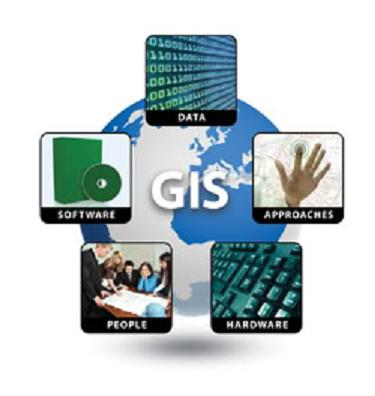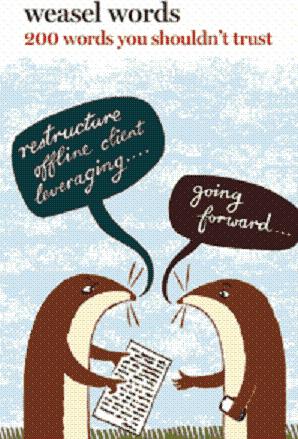Posts Tagged ‘Social Media’
Maps: Visualizing Twitter and Flickr Data
Posted by: lexpower on: July 13, 2011

How can Geographic Information Systems (GIS) help writers and content creators visualize data? Do you use information visualization in your publications and documents? (Click image for credit and source)
Data visualization is becoming the new frontier in content, writing, and communication. In this post, I want to share with you a remarkable type of map.
There are your standard, average sorts of maps, and then there are your WOW! amazing, captivating maps.
In The World in Tweets and Photos and Infographic of the Day: Using Twitter and Flickr Geotags to Map the World, Eric Fischer has created a marvelous series of geographic maps of the WOW! kind showing overlays of geotagged photos posted to Flickr and tweets to Twitter.
This fascinating project visualizes the intersection of geography and vast quantities of user-generated data.
When you look at Fischer’s images, you will see clusters of multi-colored dots that represent where people are when they send photos and tweets. Red dots correspond to Flickr photos; blue dots signify tweets; and white dots indicate locations from which both have been sent.
From New York and Washington to the entire United States to Europe to the entire world, you can see images that instantly communicate how many people are using those two social media, and where they are when using them.
In an earlier post, Information Visualization: How Can It Improve Your Publications?, I wrote about the value of using visualization to extract meaningful information from a sea of data, and gave you some guidelines for successfully doing just that.
I think Eric Fischer’s maps beautifully illustrate the best reason for visualizing large and complex data sets: visualization is a technique that allows us to explore visually and perhaps arrive at some understanding of patterns and groupings that might otherwise remain invisible.
That type of large-scale analysis gives writers and other communications professionals a powerful tool to connect with their audiences and convey a story in moving and unforgettable ways.
Enjoy Fischer’s glorious maps. I hope they inspire you to come up with even better visualizations for your own publications and documents.
Now it’s your turn: What do you think of Fischer’s maps? Do you use information visualization in your own work? What software tools do you use to take large sets of data and convert them to visual form? Please share your tips, techniques and experiences – thanks! Elizabeth Lexleigh LexPower The Write Ideas
How to Avoid Weasel Words
Posted by: lexpower on: July 7, 2011

How do you respond to weasel words? Do you find them useful, annoying, or deliberately misleading? (Click image for credit and source)
Ah, weasel words.
People often use weasel-speak in business to create the impression that they have said something important, meaningful and to the point when, in fact, their claims are ambiguous, their assertions little more than assumptions, and their statements vague and misleading.
When you hear weasel-speak, don’t you just want to raise your eyebrows in alarm and mutter What sesquipedalian tergiversation!
Here are a few common weasel phrases as examples:
Studies show …
The vast majority …
People say …
Critics claim …
There is evidence that …
Experience shows …
If you use such phrases, you can avoid weaseldom in one of two ways:
- Substitute the exact figures, names or details in place of the weasel phrase in the body of the text.
- Use footnotes or appendices in which you give exact figures, details, names, places, and so on.
Notice that the key idea in both suggestions is the same: Prefer language that is concrete, factual, specific and detailed. Substantiate all claims. Provide supporting evidence for all assertions. Avoid the clutter of bureaucratic phrases. Simpler language almost always communicates better.
You can also use what is known as the “general-concrete” pattern. In this method of writing, general and abstract statements are followed by a concrete case. Use specific examples, illustrations and detailed explanations to get your exact point across to your readers. Don’t just present concepts and sweeping generalities. Clarify each one with a concrete case, specific figures, or detailed examples to convey what you mean and help prevent weasel-speak from creeping into your writing.
Now let’s take the example weasel phrases above and remove the smoke screens. The following examples banish the empty weasel words and restore substance and specificity:
Two studies, the 2003 Hirt Report on Nicotine Use and the 2007 CDC Mortality Rates Report, show …
89 percent of respondents said …
People we interviewed agreed that …. Here is a list of their names and departments …
The movie critics of the following newspapers claim … (provide the names of the papers and critics)
The 26 supporting studies we cite in the appendix offer evidence that …
Based on the self-reported experience of the following 10 people … (give their names, describe each person’s experience in detail, and how each person’s experience supports your point)
Oh, it’s so easy, isn’t it? A little weasel here, another slithery weasel there, and before you know it, clear, substantive speech can find itself on the slippery slope to puffery, devoid of all real content.
To help you maintain sense and meaning in your writing, here is a list of handy resources I think you will enjoy:
- CSU – Jargon, Weasel Words and Gobbledygook
- WSU – The Power of Words
- Changing Minds – Weasel Words
- Weasel Words
- Edgalaxy – Weasel Words
- Say Uncle – How Business People Air Their Grievances
- Tony Goodson – Weasel Words
- 37 Signals – Corporate Speak
- Flickr – Weasel-Speak Ad
Now it’s your turn: What weasel phrases do you dislike the most? How do you avoid using weasel words? Please share your thoughts in the comments – thanks! Elizabeth Lexleigh LexPower The Write Ideas

Do your headlines and article titles sizzle? Do they grab readers’ attention? Do they make readers want to read the body copy?
asdfl
Headline, title, lead, opener – however you refer to it, the headline is the first impression your audience gets.
Whether read in a print piece or heard on radio or TV, the headline can spell the difference between success or failure: Is that first impression exciting and attention-grabbing? Does the headline offer useful information or news or promise readers they will gain something? Does the headline motivate the reader to keep reading, or make the listener continue to pay attention to what follows?
Whatever type of piece you are writing, the headline has to deliver, if it’s going to beat the competition and win people’s attention.
The secret that powers every successful headline is simple. The winners answer the most important question people ask themselves every time they read or hear a headline: What’s in it for me?
If a headline makes you interested in knowing more, it’s done its job, which is to:
- Grab your attention.
- Appeal to your self-interest.
- Deliver the main message.
- Persuade you to continue reading or listening.
Here are four sure-fire tips for writing headlines that get the job done.
asdfl
“Direct” Headline
This type of headline directly states what will follow. It clearly summarizes the message in the piece without using wordplay, hidden meanings, cleverness, or oblique references.
Select an important benefit that appeals to your readers’ self-interest, and then craft a statement that is bold, direct and perhaps even a little dramatic. For example:
Embedding Videos in Your PDF Documents
Get a Free Subscription to the Monthly Newsletter
Tank Tops – 25% Off Until Wednesday
Keep it short. Keep it simple. The “direct” headline gets right to the point.
asdfl
“How To” Headline
This one has been called “pure magic” in its ability to draw attention and compel people to continue reading or listening.
The “how to” headline dangles an irresistible promise before the reader: Listen to me. Pay attention to me. I can help you solve a problem. I can answer your question. I can help you learn something you want to know. For example:
How to Easily Save $300 a Month
How to Get More Sleep
How to Communicate Well
The “how to” says you are not alone. It relieves stress. It brings hope. This headline assures readers that others share their concern or have the same problem and, best of all, promises: You can fix it, solve it, learn it, overcome it—and here’s how.
asdlf
“Question” Headline
When you use the “question” headline, remember to focus on your audience. It’s all about their self-interest, so address your question to them. What fires up their curiosity? What fears or needs can your headline appeal to? For example:
What Won’t the Neighbors Tell You?
Which Foods Can Keep You Looking Young?
Is Your Air-Conditioner Costing You More Than It Should?
“Reason-Why” Headline
The “reason-why” headline is useful when you want to list the features of your product or service. It is also a good hook for pieces that offer advice or something to learn. For example:
Three Reasons Why You Should Get a College Degree
Six Ways of Chic Dressing on a Tight Budget
Five Steps to Looking Better and Living Longer
asdfl
These headline types are tested and proven—just look around and see what draws your attention. Ask your family, friends and colleagues. Ask businesspeople. Ask other writers. Do some research on what makes a headline effective.
Your challenge, as a writer, is to create headlines and titles that compel people to focus their attention on what you have to say and stay glued to every word.
Now it’s your turn: What sorts of headlines appeal to you? Writers, which headlines have worked well for you? Do you have any analytical insights into headline effectiveness? Please share your thoughts in the comments – thanks! Elizabeth Lexleigh LexPower The Writer Ideas
